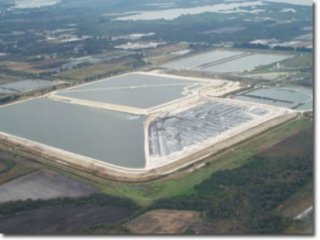
In light of the recent news regarding Piney Point and the gypstack threat in Manatee County, we are posting here what the Environmental Protection Agency (EPA) advises on its official page.
Down below they say: “what you can do” They say avoid the gypstack. Better yet, avoid letting companies make a gypstack. Humans need good health and our marine animals more than we need fertilizer. Don’t let Mosaic and HPS II ruin our planet and dry up our springs and pollute our aquifer. That’s what you can do.
In spite of news like this we have Manatee County sending a plea for help while simultaneously inviting Mosaic into their county to make more of a mess, and we have Bradford County courting HPS II with the hopes of getting rich instead of ruined. Manatee seems beyond learning, and Bradford incapable of assessing the situation.
Blindness by dollar signs.
Read the original advisory at this link.
Comments by OSFR historian Jim Tatum.
jim.tatum@oursantaferiver.org
– A river is like a life: once taken,
it cannot be brought back © Jim Tatum

RadTown
Radioactive Material From Fertilizer Production
Radiation Facts
- Phosphogypsum, a waste product from manufacturing fertilizer, emits radon, a radioactive gas. It also contains the radioactive elements uranium, thorium and radium.
Phosphate rock mining is the fifth largest mining industry in the United States in terms of the amount of material mined. The phosphate industry is concentrated in the southeastern United States. About 90% of phosphate is mined in Florida, North Carolina, and Tennessee.
About Radioactive Material from Fertilizer Production
Phosphate rock contains the mineral phosphorus, an ingredient used in some fertilizers to help plants grow strong roots. Phosphate rock contains small amounts of naturally-occurring radionuclides, mostly uranium and radium. When processing phosphate rock to make fertilizer, the phosphorous is removed by dissolving the rock in an acidic solution. The waste that is left behind is called phosphogypsum. Most of the naturally-occurring uranium, thorium and radium found in phosphate rock ends up in this waste. Uranium and thorium decay to radium and radium decays to radon, a radioactive gas. Because the wastes are concentrated, phosphogypsum is more radioactive than the original phosphate rock.
The waste that is created during fertilizer production is stored in large piles called stacks. Some stacks cover hundreds of acres and are hundreds of feet high. In the aerial photo, you can see that the top of a phosphogypsum stack is covered in water.
Phosphogypsum is very watery when it is first put on the stack. As the phosphogypsum dries out, a crust forms on the stack. The crust thickens over time, reducing the amount of radon that can escape and helping keep the waste from blowing in the wind. Some of the water can leak out the bottom and pollute local groundwater.
What You Can Do
- Obey safety instructions. Phosphogypsum stacks are located on private property away from people. Unless you are visiting a facility, you will not encounter a phosphogypsum stack. If you are visiting a facility, always follow posted safety messages.









